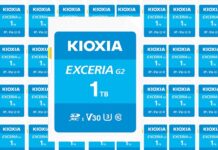Australia-based Arcitecta has developed a product which provides continuous inline data protection for files and objects with zero RTO and near zero RPO, and rollback in milliseconds to any point in time.
The Mediaflux Point in Time product is based on metadata found in Arcitecta’s Mediaflux hyper-scale XODB database. Mediaflux itself is an unstructured data management platform, a silo-aggregating software abstraction layer with a single namespace. It can aggregate files, and also objects on disk or tape or, we understand, SSDs, be these drives on-premises or in the public cloud and store their details as compressed metadata in its database. The software has a data mover and can place files in the appropriate storage tier. The database can be accessed via NFS, SMB, sFTP, Dicom, S3 and other protocols via mount points or shares.

Jason Lohrey, Arcitecta’s founder, CEO and CTO, said in a provided statement: “We are now in the Data Age, where data volumes quickly grow to billions and trillions of files. Terabytes of data are rapidly becoming petabytes to exabytes of data and beyond. Traditional methods of backing up data are unviable at those scales.”
That consigns the whole gamut of traditional data protection suppliers; Acronis, Asigra through Cohesity, Commvault, HYQU, Rubric and on to Veeam and Veritas to history. Lohrey thinks: “Organizations need a new approach to backup and recovery designed for the scale and complexity of today’s data demands. With Mediaflux Point in Time, we are redefining petabyte-scale data resilience and enabling enterprise organizations to eliminate the cost and business impact of lost data.”
We are told the Point in Time product integrates metadata-based, continuous inline data protection into Arcitecta’s Mediaflux data fabric, placing data protection in the data path as an integral part of the data fabric and file system. When a data recovery is needed the XODB software can be instructed to roll back to a point-in-time at the seconds level and restore a file or object pretty much instantly.

Mediaflux PIT provides zero data loss as every structural and data change in the protected data sources is captured in real time by Mediaflux and recorded in the XODB database, ready for Mediaflux PIT to do its work. If there is a ransomware attack users can simply scroll a time-slider in a GUI, to roll back the entire file system structure to a point before the loss occurred. Mediaflux PIT can unwind the damage in, it says, at most, minutes – rather than days, weeks or more.
It has a self-service feature. Users can connect via their standard credentials to access the single, global namespace and find their data, using wildcard searches. They can, we’re told, find files in milliseconds, no matter when and where they existed, and even in a population of billions of files or more.
Arcitecta says its Mediaflux software can dynamically add or remove storage as required and mix technologies of different types from different vendors. The software can run on dedicated hardware, in virtual machines or containers, on-premises or in cloud infrastructure or any combination.
Position Arcitecta in your mental landscape alongside Data Dynamics, Komprise and Atempo, as a Coldago report suggests, and also with data orchestrator Hammerspace.
Mediaflux Point In Times is available now as a component of the Mediaflux platform. Contact Arcitecta for more info’.








